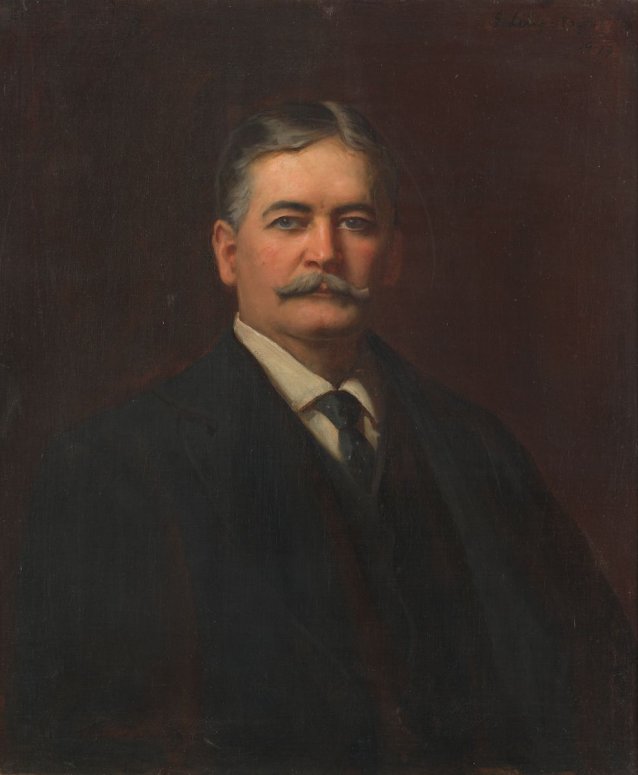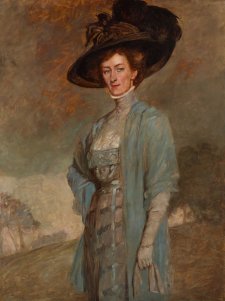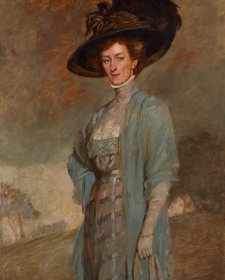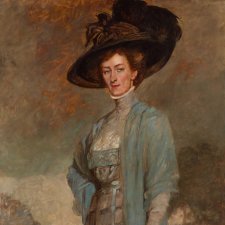James Cassius Williamson (1845–1913), actor and theatrical entrepreneur, worked and performed in theatres in his native Pennsylvania before coming to Victoria under contract to George Selth Coppin in 1874. Over twelve months, he and his comedienne wife became wealthy and famous. They returned overseas, but in 1879 they arrived in Australia having purchased from WS Gilbert the exclusive Australasian rights to perform HMS Pinafore. In 1880 Williamson formed his (Royal) Comic Opera Company. Initially sole lessee of the Theatre Royal in Melbourne, he was in and out of partnerships from 1882, mounting increasingly lavish productions with international stars, opening new ventures such as the (New) Princess’s Theatre in Melbourne, and refurbishing or leasing other venues such as Her Majesty’s in Sydney. By 1904, he had 650 employees on his payroll. Having made an unrivalled impact on Australian theatre, Williamson died in Paris, and was buried in Chicago.
Sir John Longstaff (1861–1941), born in Clunes, Victoria, studied at the National Gallery School in Melbourne from 1883 to 1887 and thenceforth at Corman’s in Paris. Becoming friends with the Australian expatriate impressionist John Russell, he met Toulouse- Lautrec and others, but his own style remained conservative and he exhibited at the Salon and the Royal Academy in the early 1890s. His personal attractiveness and charm gained him easy access to wealthy society, where he found portrait sitters including King Edward and Queen Alexandra. Longstaff painted Williamson in his St John’s Wood studio at about the same time as he painted portraits of Williamson’s daughters, Marjory and Aimée (known as Tootles). Having painted his commanding portrait of Nellie Melba in 1923, he won the Archibald Prize five times between 1925 and 1935; during this period, in 1928, he was knighted. From 1927 until his death in Melbourne in 1941 he was a trustee of the National Gallery of Victoria.
Gift of the family of Aimée Viola Horsley, daughter of J.C. Williamson 2009. Donated through the Australian Government's Cultural Gifts Program.
The National Portrait Gallery respects the artistic and intellectual property rights of others. Works of art from the collection are reproduced as per the
Australian Copyright Act 1968 (Cth). The use of images of works from the collection may be restricted under the Act. Requests for a reproduction of a work of art can be made through a
Reproduction request. For further information please contact
NPG Copyright.
















